Public Transportation in the United States
Public transportation benefits all segments of American society, including individuals, families, communities, and businesses. This vital system is essential for millions of Americans, connecting them to people, places, and opportunities. It also helps to build vibrant communities, create jobs, reduce traffic congestion, and promote a healthier environment. Investment in public transportation fuels both local and national economic growth.
Types of Public Transportation in the United States
Public transportation encompasses a variety of methods for getting around cities and regions, eliminating the need for personal vehicles. Here are some of the most common types:
- Buses: Buses are the most prevalent form of public transportation, coming in various sizes and models. They can be an ideal mode of commuting, especially in large cities.
- Light Rail: Light rail is a type of train that runs on tracks at street level or above traffic. It is often faster than buses and can be a suitable option for longer journeys.
- Subway: The subway or underground railway is a type of train that operates below ground. Subways are an excellent way to escape heavy traffic and can be very fast.
- Commuter Rail: Commuter trains transport passengers between suburban areas and cities. This type of train can be a convenient option for people who live outside of city centers and need to commute to work.
- Streetcars and Trolleys: Streetcars and trolleys are electric vehicles that run on rails along streets. They are often slower than buses or light rail but can be an enjoyable way to sightsee around a city.
- Vanpool Services: Vanpool services are a type of shared ride system that allows groups of people to commute together to work using a van. This type of service can be more cost-effective than driving personally.
- Paratransit: Paratransit is a transportation service designed for individuals with disabilities who are unable to use regular public transportation systems.
- Monorail and Tram: Monorails are a type of train that runs on a single track, while trams are similar to streetcars but are often larger and more modern. These types of vehicles are not as common as other forms of public transportation but can be a convenient option in some cities.
Best U.S. Cities for Public Transportation
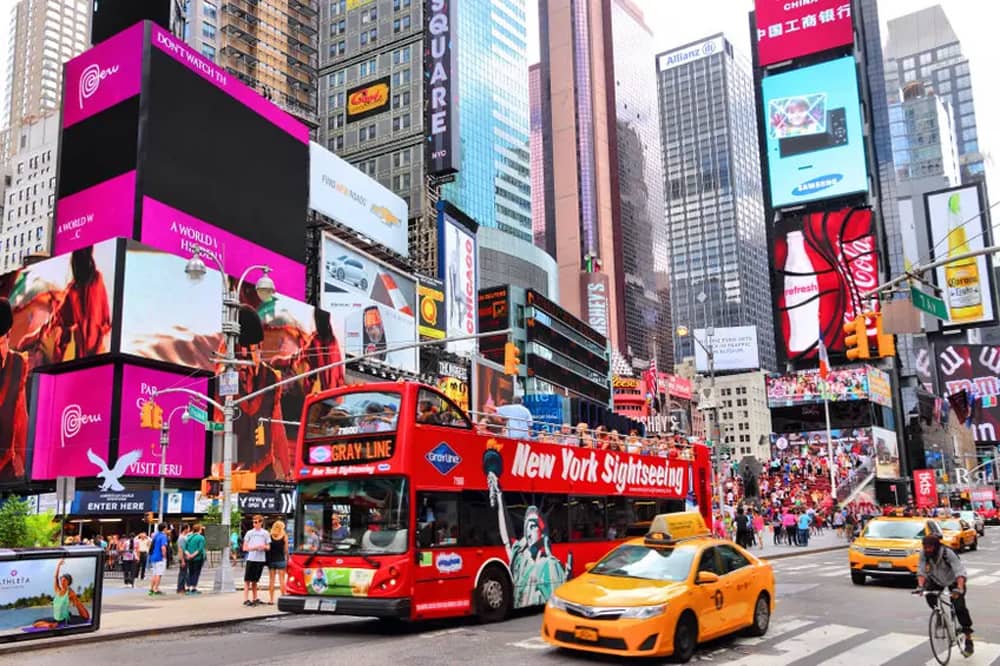
New York City's Public Transportation System
The public transportation system in New York City is, by a significant margin, the best in the entire United States. Its subway network alone, with 472 stations across four boroughs, is just a few dozen stations short of the total number of subway stations in all other cities in the country combined. The bus network, with 327 routes, is not far behind.
This interconnected system, overseen by the Metropolitan Transportation Authority (MTA), is accessible in most parts of the city and meets the transportation needs of the majority of its residents. The neighborhoods in New York City with the best public transportation include the Upper East Side, Upper West Side, and Washington Heights.
Each year, 56% of New York City's population uses the city's strong public transportation network, resulting in a total of over 2.3 billion subway and bus trips. This is particularly important as over 1.6 million people commute to Manhattan for work each day. The annual ridership of the New York City subway system is at least ten times higher than that of any other city in the country.
In addition, New York City is still working to improve its transportation system. At the state level, initiatives are underway to expand access and improve social equity by creating more regional routes and flat-rate fare options for residents outside of the MTA. Within New York City, projects like the Interborough Express, the Queens Bus Network Redesign, and dozens of other accessibility and social equity initiatives are also underway.
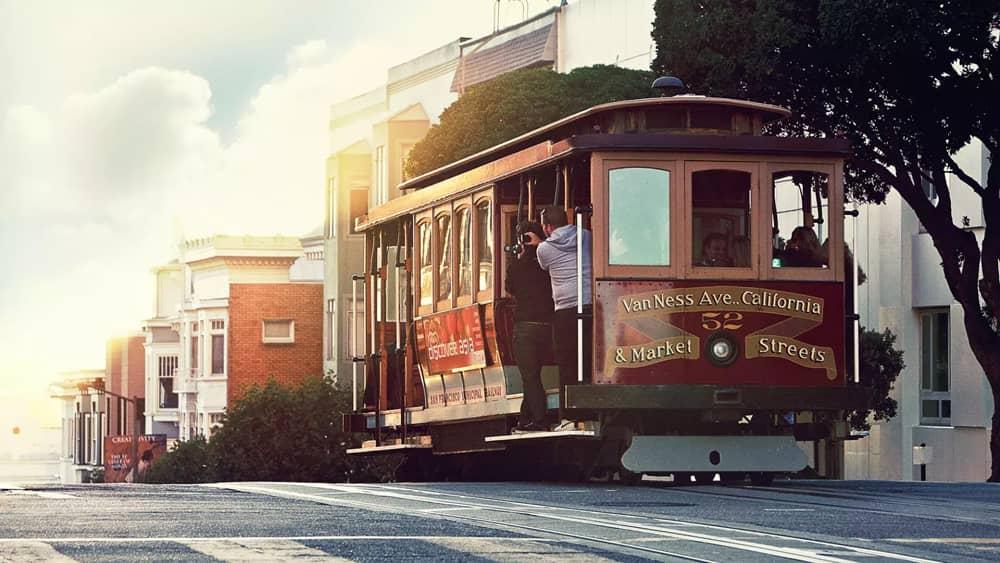
San Francisco Public Transportation System
San Francisco, as the most walkable city in the country, boasts the second-best public transportation system in the United States. The city's public transportation history dates back over 150 years with the introduction of cable car lines. Since then, the system has evolved into a regional network of light rail, buses, trains, and ferries, including three historic cable car lines, serving 433,000 people weekly. Ridership decreased during the pandemic but has been steadily increasing.
San Francisco's public transportation system, known as Muni, is operated by the San Francisco Municipal Transportation Agency (SFMTA). The neighborhoods in San Francisco with the best public transportation include Tenderloin, Chinatown, and Rincon Hill.
Most transportation systems serve the central part of the city, but BART trains can also take you to regional destinations. Ferries also serve as an alternative mode of transportation and are ideal for commuting and recreation.
San Francisco not only wants to improve its public transportation system, but it also needs to. The city has a "Transportation First Policy" in its charter (which also prioritizes walking and biking). The biggest initiative in this area is "Muni Forward," which is expanding the rapid bus network and improving streets and mobility.
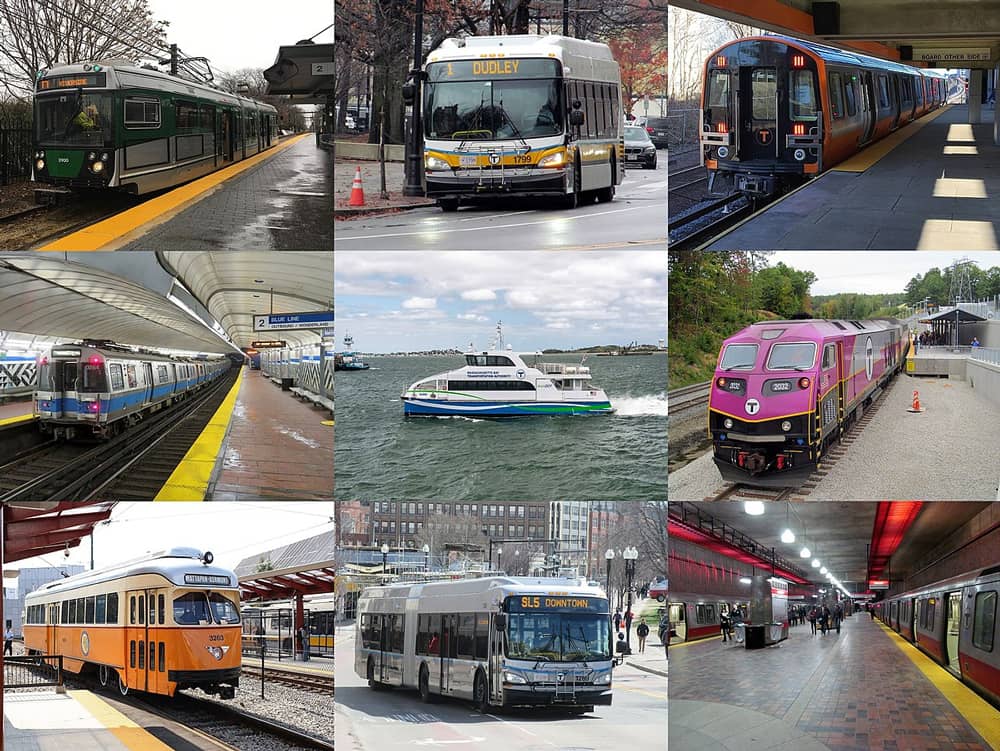
Boston Public Transportation System
Boston, boasting the third-best public transportation system in the country, is known as the "T" and is operated by the Massachusetts Bay Transportation Authority (MBTA).
Boston's public transportation includes buses, streetcars, ferries, and 153 subway and train stations, seamlessly integrated with the city's dense and diverse neighborhoods and suburbs. The Boston neighborhoods with the best public transportation include Beacon Hill, Downtown, and Chinatown-Leather District.
The "T" system is also truly regional, connecting most suburban areas of Massachusetts to downtown Boston. Residents also benefit from this accessibility. With over 759,000 trips per weekday and 19 million trips per year, the "T" system ranks as the fifth-largest transit system in the country.
Efforts are underway to further improve Boston's public transportation system. For instance, the city's "Five-Year Capital Investment Program" allocates funding to rebuild, expand, or improve all five major subway lines. The "Go Boston 2030" plan also guides the city's investments and ensures that these investments are equitable and accessible.
Jersey City Public Transportation System
Jersey City, with nearly 50% of its residents using public transportation for their daily commute, boasts the fourth-best public transportation system in the United States. Due to Jersey City's proximity to New York City and Newark, much of the city's transportation network directly connects to its neighbors, extending beyond the boundaries of a single city. For example, the PATH train system connects Jersey City to New York City through two tunnels under the Hudson River.
Other options in Jersey City include the Hudson-Bergen Light Rail and dozens of bus routes. The Jersey City neighborhoods with the best public transportation include The Waterfront, Historic Downtown, and Journal Square. Additionally, the new Via shared ride service is an integral part of the city's infrastructure, primarily serving lower-income residents.
Public transportation in New Jersey is unique in that most cities do not run their own transportation networks; instead, they are served by the statewide agency "New Jersey Transit" (NJT). This arrangement provides a remarkably regional network of accessible transportation.
Jersey City is looking to expand options within its borders, such as adding more bus stops, express transit lines, and developing its own micro-mobility. NJT is also expanding the Hudson-Bergen Light Rail.
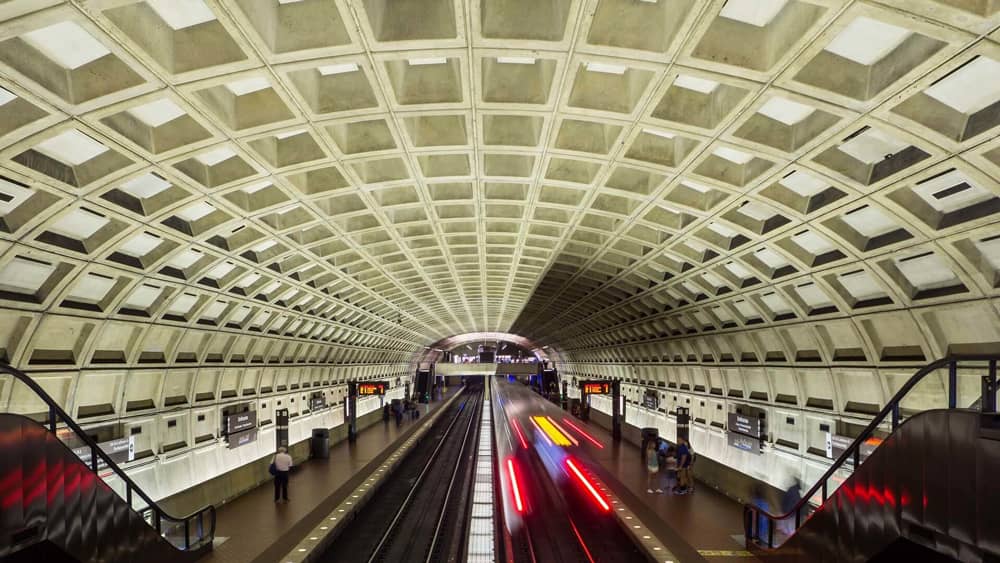
Washington D.C. Public Transportation System
Washington D.C., boasting the fifth-best public transportation system in the United States, is managed by the Washington Metropolitan Area Transit Authority (Metro). The Washington Metro subway system (Metrorail) has six lines and 98 metro stations, while the Metrobus bus network has 1,500 buses and hundreds of bus stops. Metro manages the entire public transportation system in the D.C. metropolitan area (DMV), which also includes parts of Maryland and Virginia.
With nearly 100 million riders in 2022, Metro ranks third in the country in terms of ridership. The Washington D.C. neighborhoods with the best public transportation include Downtown, Mount Vernon Square, and Logan Circle.
Similar to most cities across the country, ridership during the pandemic declined sharply but is now on an upward trend. Current projects and initiatives to improve Metro include the "Better Bus Initiative," which focuses on redesigning the network and improving station shelters, as well as several Metro improvement projects, such as the Red Line modernization.
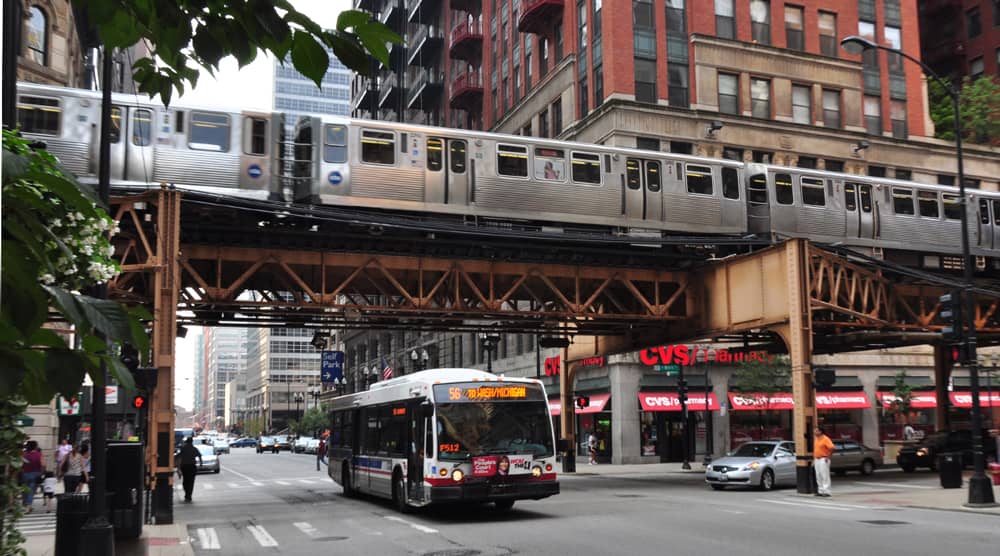
Chicago Public Transportation System
Chicago, boasting the eighth-best public transportation system in the United States, is managed by the Chicago Transit Authority (CTA) and is known as the "L." Getting around the city is easy with the CTA's eight subway lines or 129 bus routes. The Chicago neighborhoods with the best public transportation include The Loop, Fulton River District, and South Loop.
Regional transportation is provided by Metra (rail) and Pace (bus), connecting Chicago to 35 suburbs.
Unfortunately, access to public transportation is not as convenient in all parts of Chicago as in cities like New York and Boston. However, significant efforts to modernize stations, upgrade routes, and create social hubs around subway stations have been successful. These efforts are a bright spot amidst the $176 billion backlog of public transportation infrastructure repairs facing most cities in the country.
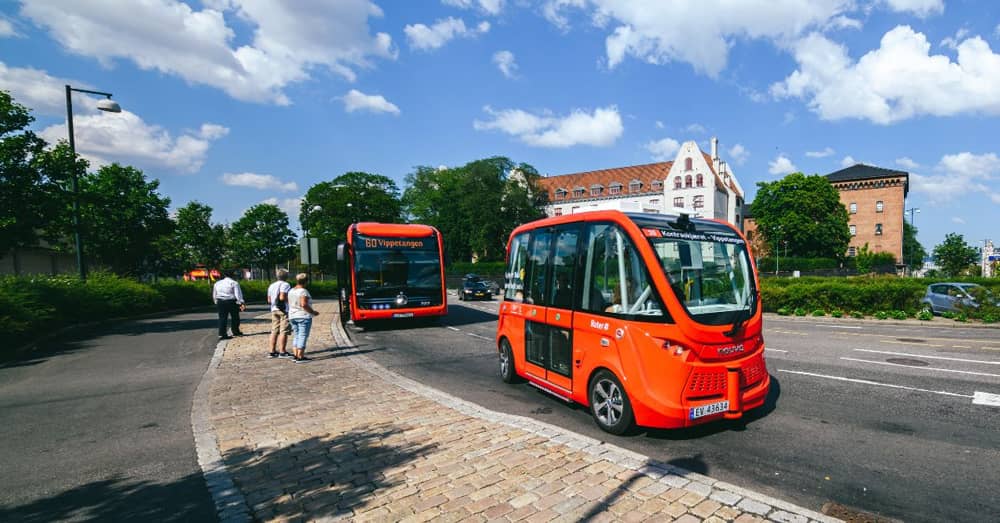
Facts about the Public Transportation System in the United States
Public transportation plays a vital role in the United States, facilitating millions of daily commutes and connecting individuals to essential services. This comprehensive overview delves into the key aspects of the nation's public transportation system, highlighting its economic significance, accessibility, and impact on urban development.
Usage and Industry Overview
In 2019, Americans embarked on a staggering 9.9 billion trips utilizing public transportation, equating to approximately 34 million journeys per workday. This extensive network of transportation services encompasses a thriving industry valued at an impressive $79 billion, employing over 430,000 individuals.
Accessibility and Millennial Perspectives
Despite its widespread presence, public transportation remains inaccessible to approximately 45% of the American population. However, among the younger generation, millennials particularly recognize the value of public transportation, viewing it as an optimal mode for digital engagement and community connection.
Economic Impact and Job Creation
Public transportation not only facilitates mobility but also serves as a powerful economic driver. Every dollar invested in public transportation generates a remarkable $5 in economic returns. Moreover, each billion-dollar investment in public transportation fosters the creation and support of approximately 50,000 jobs.
Benefits for Businesses and Property Values
The positive economic impact of public transportation extends to businesses as well. Every $10 million invested in public transportation infrastructure generates $30 million in increased sales for local businesses. Similarly, investments in public transportation operations lead to $32 million in additional sales for businesses.
Furthermore, public transportation systems significantly enhance the value of surrounding properties. Homes situated near public transportation hubs command up to 24% higher valuations compared to those in less accessible areas.
Impact on Hospitality Industry
The benefits of public transportation extend to the hospitality sector as well. Hotels in cities with direct rail connections to airports experience an impressive 11% higher revenue per room compared to their counterparts in cities without such connections.
The U.S. Transportation System: A Paradox of Excellence and Inequality
The United States transportation system presents a paradoxical picture of excellence and inequality. While major metropolitan areas like New York and Boston boast world-class public transportation systems, other cities like Chicago grapple with significant access challenges. This disparity reflects a historical reliance on personal vehicles and a lack of consistent federal investment in public transportation.
However, a growing movement towards regional integration is taking shape. Cities like Jersey City are leveraging their proximity to major transit hubs to expand their systems, while states like New Jersey prioritize the development of integrated public transportation networks. Additionally, the emergence of micro mobility options and a focus on equity in infrastructure projects offer hope for a more comprehensive and accessible transportation system for all Americans.
For more information about immigrating to the United States and studying in the United States, contact the Pen Students Institute.